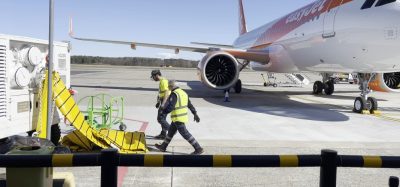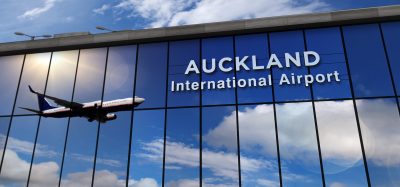ISAGO – the way to safe ground operations
- Like
- Digg
- Del
- Tumblr
- VKontakte
- Buffer
- Love This
- Odnoklassniki
- Meneame
- Blogger
- Amazon
- Yahoo Mail
- Gmail
- AOL
- Newsvine
- HackerNews
- Evernote
- MySpace
- Mail.ru
- Viadeo
- Line
- Comments
- Yummly
- SMS
- Viber
- Telegram
- Subscribe
- Skype
- Facebook Messenger
- Kakao
- LiveJournal
- Yammer
- Edgar
- Fintel
- Mix
- Instapaper
- Copy Link
Posted: 8 August 2011 | Guenther Matschnigg, Senior Vice President, Safety, Operations and Infrastructure at IATA | No comments yet
Many interesting and exciting developments have occurred since the IATA Safety Audit for Ground Operations (ISAGO) began in May 2008. Back then, it was a grand plan to get ground operations audited in order to enhance safety on the ramp while reducing industry audits. Only three years after its introduction to the aviation industry, ISAGO has become a household name for quality audits, resulting in increased levels of safety. Now totalling more than 350 audits, ISAGO audits are being carried out in more than 120 locations worldwide.
Programme growth
The growth and development of ISAGO is the result of the dedication and vision of many key industry stakeholders. First and foremost, the 41 ISAGO pool member airlines have made the programme stronger than ever. Each one of them has provided numerous auditors in the implementation of stricter standards that no regulatory entity has ever implemented before. Ironic as it may seem, despite ground handling being such a very important component of the aviation industry, it nevertheless lacks standardised oversight.
Many interesting and exciting developments have occurred since the IATA Safety Audit for Ground Operations (ISAGO) began in May 2008. Back then, it was a grand plan to get ground operations audited in order to enhance safety on the ramp while reducing industry audits. Only three years after its introduction to the aviation industry, ISAGO has become a household name for quality audits, resulting in increased levels of safety. Now totalling more than 350 audits, ISAGO audits are being carried out in more than 120 locations worldwide.
Programme growth
The growth and development of ISAGO is the result of the dedication and vision of many key industry stakeholders. First and foremost, the 41 ISAGO pool member airlines have made the programme stronger than ever. Each one of them has provided numerous auditors in the implementation of stricter standards that no regulatory entity has ever implemented before. Ironic as it may seem, despite ground handling being such a very important component of the aviation industry, it nevertheless lacks standardised oversight. For some pool members, audit reduction is as high as 28 per cent depending on how ISAGO is incorporated in their own quality assurance programme (QAP). The more ISAGO is incorporated in the QAP, the more effective ISAGO is and the greater the benefits.
Along with the auditors, credit must also be given to the ground service providers (GSPs) for embracing the change that they are presently undergoing. Prior to ISAGO, GSPs were not used to harmonised safety standards. Now their processes have changed and evolved to a higher level. What has also been interesting is the enthusiasm with which ISAGO has been accepted by the GSPs. IATA currently has more requests for audits than available resources, which is encouraging, so long as this situation is corrected soon. While more airlines demand ISAGO audits from their GSPs, the providers are now more open and ready for the challenge. The world’s biggest players such as Swissport, Menzies and Aviapartner, are now coming forward requesting audits, the smaller companies – quite rightly – do not want to be left behind.
Programme development and structure
The second edition of the ISAGO Standards Manual was made effective in May 2010, just two years after ISAGO’s launch. Not only did it condense related standards together, but it also allowed auditing airlines to audit ground handlers that have their station collocated with their corporate headquarters. This was a complete change from the original structure where IATA-accredited Audit Organisations (AOs) would perform the corporate headquarters audit. This has provided the auditing airlines a complete view of a GSP’s operations.
The ISAGO Pool Advisory Group and ISAGO Oversight Committee are both on their eighth round of meetings. These groups are tasked to drive and oversee the programme’s strategic development.
Regulatory authorities endorsement and support
Also noteworthy is the acceptance of the programme by some airports, which to varying degrees have insisted that their service providers pass the ISAGO audit and be listed on the Registry. Regulators have also been very supportive, but we have to contend with too little or too much legislation. To date, ISAGO has received 50 letters of support from as many national regulators and airport authorities. In fact, ISAGO was made mandatory in Lebanon, Turkey, Montego Bay (Jamaica), and Seattle- Tacoma (USA). ISAGO is also listed as one of the acceptable means of compliance in Amsterdam Airport Schiphol.
Growing pains and the challenges ahead
The remaining problem is getting more airlines to commit their resources to ISAGO. Despite concerted efforts, some airlines still seem reluctant to commit responsibility for ground operations audits to be performed by anyone else but their own auditors. The principle of ISAGO is to replace the multiplicity of airline audits with a single event ISAGO audit, thereby reducing the sometimes bothersome and redundant airline audits, saving the airlines the auditing costs and the GSPs the time spent on being audited and responding to audit findings from each and every airline that they serve. The reluctance for the airlines to ‘let go’ is mostly due to the fact that regulators generally devolve responsibility for ground operations to the airlines and therefore the airlines are concerned about not being in compliance if they do not do their audits. This has led to some criticism that ISAGO does not offer much in the way of benefit to the airlines. While from a short-term perspective this observation has its points, what it actually underlines is the need to get policies and rules amended to accommodate the rapid changes taking place in the aviation industry. It is a strange inconsistency that for an industry that relies on its speed for existence, bureaucracy can hinder important and worthy programmes and initiatives.
One thing is certain however, the industry cannot go back to the pre-ISAGO days. Efforts have to be made to get everybody on board with the programme and there are still places where airlines either cannot choose their own GSPs or the choice of providers leaves a lot to be desired. Gradually the level of competence is increasing and more GSPs see the benefits of attaining a high level of proficiency.
Moving forward with the IATA Ground Operations Manual (IGOM)
As ISAGO progresses, one aspect of the ground handling industry became abundantly clear – not all ground operations manuals (GOMs) are created equal. Furthermore, the degree of difference between best and worst is huge and GSPs have to be able to deal with all the variations. This makes conducting an audit difficult at times, as a GSP has to balance the requirements of its clients and the requirements of obtaining a finding-free audit. Most GSPs have (or should have) their own version of a GOM or at least some default operating procedures. Audits also reveal that there are some staggering differences in the quality of these documents when benchmarking one against another.
Consensus was for a standard set of ground handling instructions. Logically, there should not be any fundamental differences between handling Airline A’s and Airline B’s aircraft of the same type. Obvious as this might be, it is not the case today and in most instances, GSPs have as many different GOMs as they have clients. Airlines too, especially those who also do third party ground handling, have seen the need for more harmonised ground operations.
To resolve this, IATA developed the IATA Ground Operations Manual (IGOM). A year after its start-up, IGOM has become focused on ramp operations that are directly related to operations around the aircraft itself. In developing IGOM, it was understood that some GSPs and airlines would easily exceed the IGOM expectations – however, there are a lot of airlines and GSPs who will find IGOM a handy reference source, as well as being an aid to successfully dealing with audits.
The IGOM Development Task Force is made up of well-respected members of the ground handling community, both from airlines and GSPs. IATA also met with the European Commercial Aviation Safety Team (ECAST) group under the auspices of the European Aviation Safety Agency (EASA) and the UK Civil Aviation Authority and gained their support for its initiative. This degree of regulatory support at this early stage of the initiative is indicative of the importance EASA assigns to a safer ground operating environment.
IGOM compliments ISAGO and the Airport Handling Manual (AHM) and this initiative is bringing a new and improved degree of harmonisation and consistency to the ramp which will benefit all operators. This new way of operating will end the free-for-all that has caused, or led to, so much damage, discrepancies, misunderstandings and extra costs in the past.
ISAGO as an industry mover
ISAGO will remain as a significant part of the aviation industry. It was developed in order to fill the gap in the industry and the programme is, and will continue to be, a key contributor on raising the bar for safe ground operations.
About the Author
Günther Matschnigg, Senior Vice President, Safety, Operations & Infrastructure, joined IATA in September 1999. Before joining IATA, Mr. Matschnigg spent five years as Vice President Maintenance Organisation for Austrian Airlines. Prior to that, he served 15 years as Deputy Head of Technical and Operational Affairs in the Federal Ministry of Transport and spent one year as General Manager of ÖFAG – Aerotechnik in Salzburg and Graz. Mr. Matschnigg has served extensively on various conferences and committees. He was also a Member of the JAA Maintenance Committee for a period of ten years, one year as Chairman. For the past 20 years Mr. Matschnigg has given lectures at the Technical University in Vienna and since 2008 as Visiting Professor at the Civil Aviation University of China. Mr. Matschnigg has a degree in Mechanical Engineering and Economics from the Technical University in Vienna, holds an ICAO Type I Maintenance Engineer Licence as well as a Commercial pilots licence. He flew as Pilot in Command for Charter Air.

















